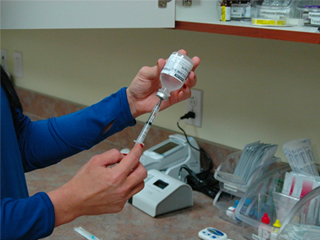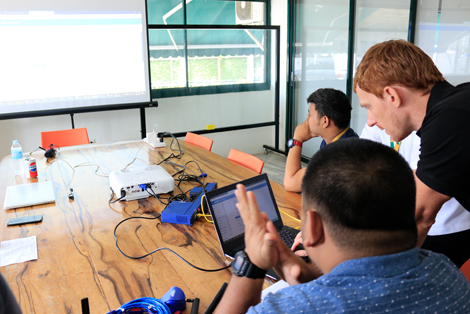
Photo credit: www.vertiv.com
Because of the necessity for faster deployment and utilization, data centers are now simplifying their design and construction. This is also to keep up with the increasing control costs. With an increased demand for data center capacities, the non-raised floor is now considered a strategy to streamline data center utilization.
Part of this change is veering away from raised floors. The elimination of data center floor height provides simple access to data centers. With the new trend of using non-raised floors on data centers, we think about how ideal the set-up may be for its use. To thoroughly understand the leading cause of raised flooring for data centers, it is best to look into its rationale.
The Rationale Behind Raised Floors
The science behind raised flooring started in the 1960s. In the last 40 years, the design of raised floors has never changed. This can be the effect of the functionality of the data center system. The raised floors provide:
- good air distribution of cooling data center equipment
- facilitate a good flow of data cabling
- gives a strategic location to the power source
- reduce any utility piping necessary to maintain the data center environment
Path for Data and Power Cabling
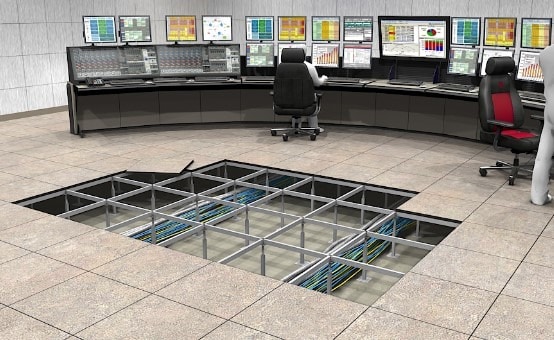
Photo Credit: theconstructor.org
A significant function of a raised floor is to facilitate good data and power cabling. Early versions of IT equipment from past data centers come in different shapes and sizes. This variety made it challenging to plan equipment locations. The raised floor becomes a promising pathway for equipment data and power cables.
Space underneath is ideal for routing these cables in the most strategic location that would be easy access for users. It serves as a practical design structure to connect IT equipment and run it efficiently. When these power cables are in order, server operation is easy.
Raised Floor Precautions
However, despite the practicality of raised flooring in a data center, there are potential problems brought about by the specific design choices. These are vital considerations in terms of designing data centers.
- Security
The space provided by a raised floor represents security concerns. It is easy to break into. Easy access presents ways to enter and tamper with any cables inside. Such security concern requires additional investment for security standards.
- Cleaning and Maintenance
Maintaining an excellent environmental condition of the data center is crucial. But a raced floor with no defined set-up plan can be a recipe for disaster. Dust and other particulates accumulate to the wires and structure in the raised floor. These can be difficult to clean up. It is also a potential source of accidents, and risks may be high in the long run. Similar to security concerns, a commitment to regular cleaning and maintenance is a must.
- Cost
Because raced flooring has a defined structure, it presents a significant construction cost. Taking into account labor, material, and installation, the space requires square meter budget allocation. Adding all other miscellaneous expenses can incur considerable costs.
Non-Raised Floor as an Alternative
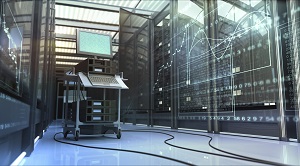
Photo Credit: www.florock.net
With the current data center innovation, data center capacity is in full bloom. Such capability requires a supplemental design to maximize its potential. The adoption of cloud services and the Internet of Things (IoT) has reimagined data center access. There is third-party colocalization that meets the demand and is a cost-efficient strategy for data center needs.
With this scenario in our midst, doing away with raised floors is logical. This can trump the following data center elements:
- Cost
With lesser engineering involved, it eliminates investment in state-of-the-art materials and installations. With no space to manage and maintain, recurring costs are also cut down. Security costs will also reduce significantly.
- New Data Utilization
Datacenter colocation is the new norm for data utilization. Limited data storage is no longer a risk. Customizing data utilization expands and is a new market competency of data center providers. In line with this, there is no point in using raced floors.
- Deployment
The installation timeline in a raised floor will take time. Cutting that hurdle will streamline deployment in the process. For data center providers, the lesser buildup timeline equals a better return of investment for them.
Cooling Management in Non-Raised Floor Data Centers
Simplifying data center design through the non-raised floor is a noble idea. But with the new design trend comes a significant challenge for environmental management. The conditions such as airflow and temperature are of relative importance to the simple design itself.
- Managing pressure
Pressure measurement is more complicated with non-raised flooring. Because there is little space for air to pass through, the pressure within will not be constant. With lesser space to wire your cables and power source, the airflow will follow a different pattern. The structures will change the air’s course throughout the system.
Air velocity is reduced once air passes from the entry down to the end of the flooring. This entails a big difference in pressure in specific spaces. This is a big challenge, especially in meeting constant pressure.
- Measuring temperature
An alternative to check airflow is measuring temperature. Usually, there is a set temperature control point. This will calculate the air temperature that passes through the unit. This will gauge if there is enough airflow circulating the equipment rack.
This approach takes into account many failure conditions caused by blocked cold aisles. Monitoring airflow temperature is directly proportional to the current pressure the aisle has. Airflow temperature can be a good indicator of positive pressure between the cold and hot aisle.
- Delta T approach
The Delta T approach is a supplement to the temperature control method. Delta T is the difference in temperature for air going to the cooling unit to that of air leaving the unit. This strategy incorporates the system Delta T to control the cooling unit airflow. When there is a high temperature from the returning air, the control will increase fan speed to decrease temperature. This goes otherwise when the air temperature is too low.
Delta T considers cooling and airflow capacity for individual servers and not just the data center as a whole. It optimizes standard air temperature for each server, stabilizing the overall temperature condition of the data center.
Retrofitting Data Centers Through Technology Solutions
While it is essential to meet the demands of data center innovation, utilizing non-raised floors can be impractical without any supplements. Developing good cooling management standards will maximize the design and improvements for a data center. Retrofitting cold aisle containments can be helpful. Other technology solutions can be installed to monitor environmental conditions.
Conditions Favoring Non-Raised Floors
In planning a data center design, IT space is premium. But the advent of data center providers eliminates the IT density in a local server facility. Smaller rooms are now the new utilization point in operating data centers. Ramping up these small rooms with less than 50 cabinets will emphasize space utilization that favors non-raised floors. The innovation in cloud-based systems favors non-raised floors. The facility set-up utilizes fresh airflow systems. It no longer requires chilled water delivered in the IT space. Other than that, new cooling technologies eliminate raised floors as a requirement for data centers.
Rethinking Data Center Design
The structural limitation nowadays is not conducive for raised data centers. Combining the cost and energy consumption can be detrimental to invest in a raised-floor set-up. Hyperscale data centers utilize non-raised floors. They are built on hard flooring, maximizing cabinet spaces for premium utilization.
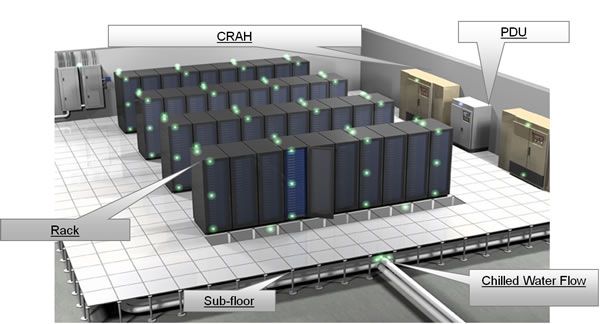
Photo Credit: www.tsmtutorials.com
The increase in demand for data center capacity is a double-edged sword. It is an excellent opportunity to harness innovation to meet the demand. It presents a significant challenge to utilize a cost-effective data center set-up. Building data centers on non-raised floors ensure speed and cost savings. But it also offers a different take on how to implement cooling strategies. Streamlining colling management approaches with innovative data center monitoring solutions may be the best way to optimize your data center.
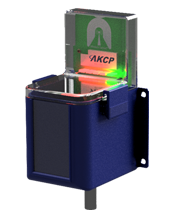
AKCP Wireless Temperature and Humidity
Data Center Monitoring Solution
AKCP has a variety of sensors for monitoring the temperatures in a data center. From room temperature to server cabinet temperature. AKCP wireless sensors are applicable to any data center design, like a non-raised floor-designed data center.
While there are uncertainties and gray areas on how to properly operate a non-raised floor data center. The solution still remains the same for monitoring its cooling system. Equipped the data center white space with wireless temperature sensors every five or 10 racks to identify areas where temperatures are running high. Using these temperature sensors with air differential sensors in the AHU system enables coordinated control among all units in the data center.
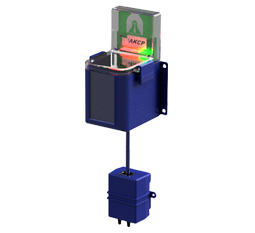
AKCP Wireless Differential Air Pressure
AKCP has a range of sensors to conduct temperature monitoring in any design of data center. Ensuring you are running at optimal ASHRAE recommended temperatures will mean less downtime and longer life of your servers and rack-mounted equipment. AKCP has a range of sensors to help you do this, from basic temperature and humidity sensors to cabinet thermal maps for detailed monitoring.
Reference Links:
https://www.vertiv.com/492d74/globalassets/products/thermal-management/thermal-control-and-monitoring/overcoming-the-challenges-in-cooling-non-raised-floor-data-centers-white-paper-sl-70611.pdf
https://download.schneider-electric.com/files?p_Doc_Ref=SPD_SADE-5TNQYN_EN
https://www.datacenterdynamics.com/en/opinions/re-thinking-cooling-management-non-raised-floor-data-centers/

